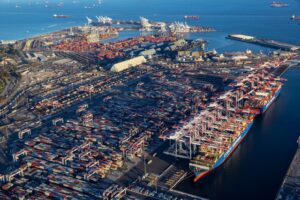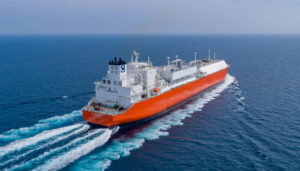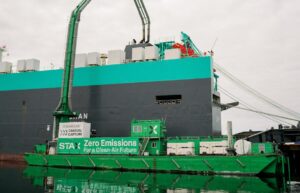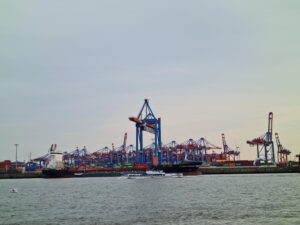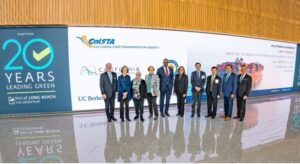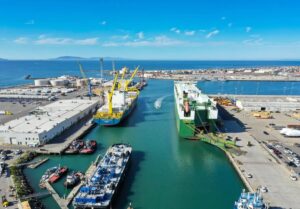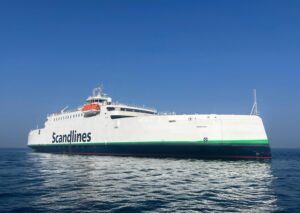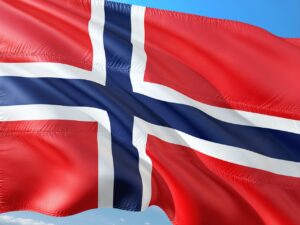Port of Long Beach’s GHG emissions up by 22 pct amid pandemic woes
The COVID-19 pandemic has created historic supply chain disruptions resulting in bottlenecks and an unprecedented number of ships waiting along the coasts across the globe. The unusual increase in the number of oceangoing vessels staying at anchor off the coast of the San Pedro Bay port complex last year resulted in 22% higher greenhouse gas emissions since 2005, the Port of Long Beach revealed in this year’s emissions inventory report.
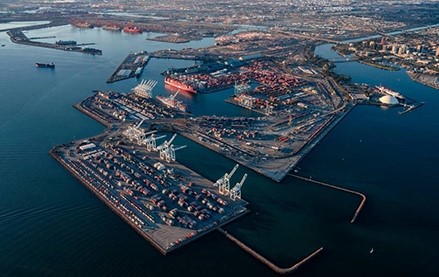
The supply chain congestion has seen over a hundred vessels, mainly containerships, sitting at anchor or loitered due to cargo surges at the peak of the supply chain disruption, causing a rise in emissions in the bay.
What is more, ships were staying longer berthed at terminals as loading and unloading operations were impacted by capped sizes of work groups amid health precautions. More cargo-handling equipment was used to keep up with the activity, and trucks waited longer in queues as a result of systemwide logistics issues. Additionally, a higher than usual number of visiting ships were not equipped with shore power, and other ships used less shore power due to a California emergency energy-restriction order event, the port authority said.
“Putting it simply, the pandemic created emissions-inducing bottlenecks in the supply chain,” said Long Beach Harbor Commission President Sharon L. Weissman. “No one could have foreseen this once-in-a-lifetime event, but we are not discouraged by this temporary impediment, and our goal to be a zero-emissions port remains.”
Despite these unprecedented factors, the Port of Long Beach said it has continued to forge ahead in developing zero-emissions technology in its quest to become a zero-emissions port.
The port’s annual emissions inventory report, presented to the Long Beach Board of Harbor Commissioners on Monday, found diesel soot is down 88%, nitrogen oxides have decreased 49%, and sulfur oxides have decreased 96% compared to 2005. In the prior study year, diesel particulates had decreased 90%, nitrogen oxides 62%, and sulfur oxides 97%. The Port uses a baseline of 2005, the year before the original San Pedro Bay Clean Air Action Plan (CAAP) was adopted.
In this year’s inventory, greenhouse gas emissions are up 22%, a major shift from the previous inventory when GHG emissions were down 10% compared to 2005.
“Many of the negative conditions which created this perfect storm have improved,” said Port of Long Beach Executive Director Mario Cordero. “In recent months, as we’ve left behind the surge of COVID, great strides have been made in reducing the number of ships waiting at anchor. Looking ahead, a vessel queuing program put into place last year to relieve congestion is also expected to have a positive impact on the next inventory.”
Moving forward, the port said preventing congestion was one of the main factors in keeping emissions at bay. The port has managed to bring down the number of vessels waiting at anchor below ten.
The port has set a goal of all zero-emissions cargo-handling equipment by 2030 and a zero-emissions drayage truck fleet by 2035. About 17% of the cargo-handling equipment at the port is electric powered, the largest such fleet in the United States. Last month, the Port announced that a trucking company partner will convert to fully-zero emissions by 2025 – 10 years before the 2035 goal.
Since 2021, the port has put in place a number of initiatives to further reduce air pollution including the Clean Truck Fund Rate, committing $150 million to support zero and near-zero emissions demonstration projects, as well as the Green Ship Incentive Program that provides incentives for Tier III vessels. These include funds for demonstrations of vessel technologies capable of reducing ship-related emissions through its Technology Advancement Program.
Last month, the Port of Long Beach also welcomed the West Coast’s first LNG-powered ship.

